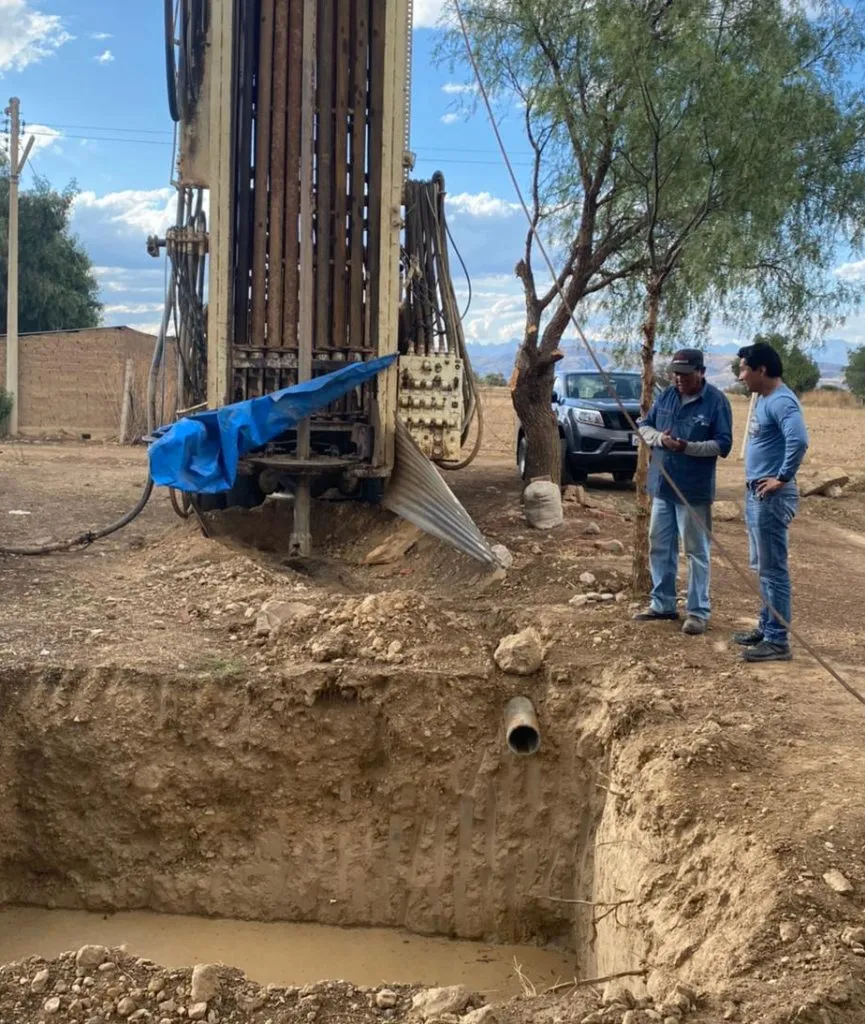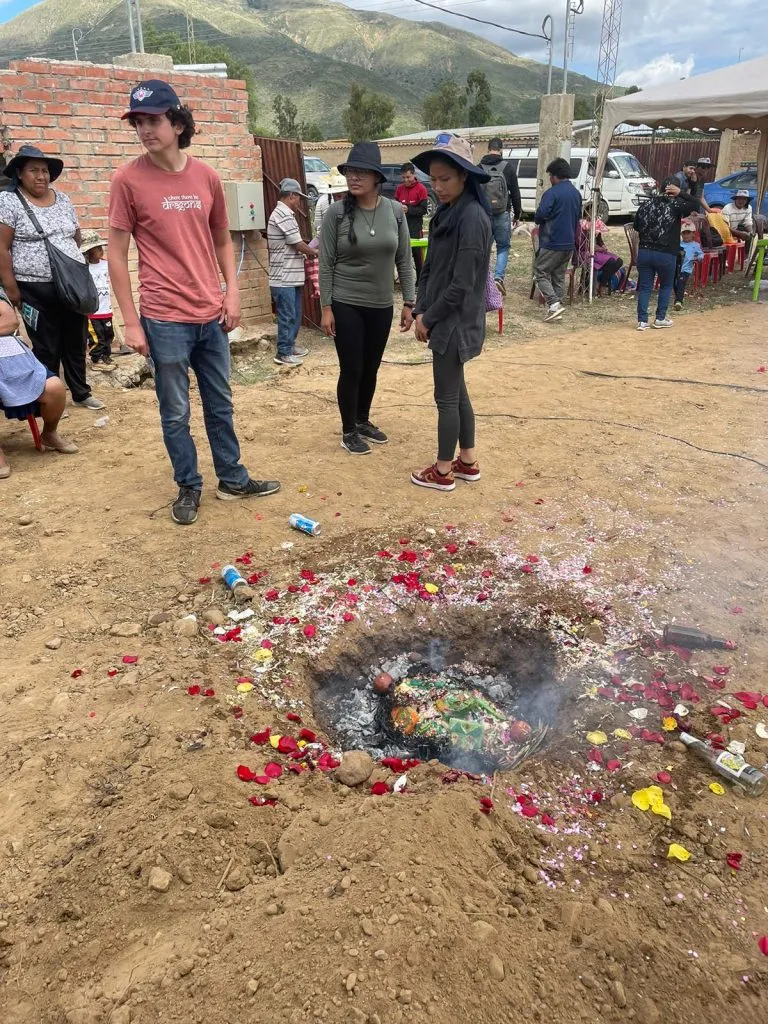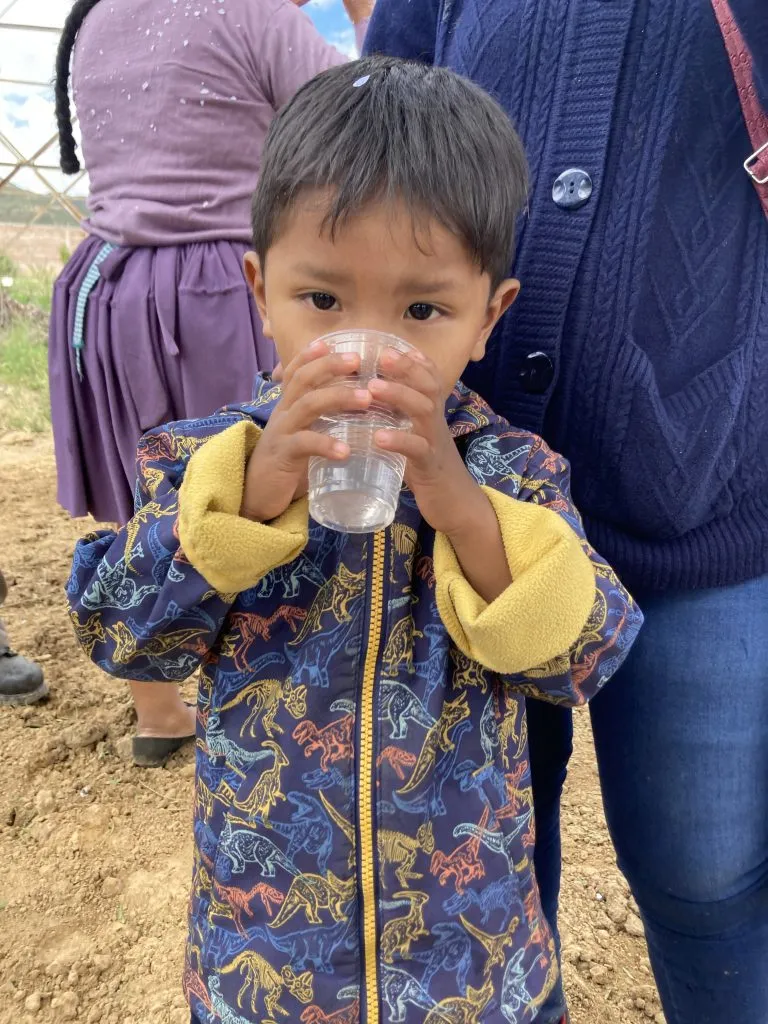The indigenous farming community of Mamanaca lies in the fertile Cochabamba Valley, about 12 miles from the city. After Mamanaca’s decades-old, manually-dug well collapsed several years ago, its 100+ families have lacked access to water for drinking and household use, for their few domestic animals, and family gardens. In 2020 they asked Mano a Mano to drill a “professionally engineered” well in partnership with them. Mamanaca came to the top of our waiting list this winter. The well was completed in late February.

On March 14th, about 75 members of the community, Bolivian dignitaries, and a dozen U.S. visitors gathered to celebrate the successful completion of this well. The dedication involved two side-by-side ceremonies.

Most of the crowd centered on the “official” ceremony, a recognition of the complex professional work required to reach deep into hard rock to retrieve sufficient water.
The celebration started with speeches by “dignitaries”: Sr. Wilder Rocha Diaz represented the municipality of Tarata in which Mamanaca is located; Coronel Jose Raul Peredo Claros spoke on behalf of the Cochabamba Norte Rotary Club; Segundo Velasquez from Mano a Mano’s U.S. office brought greetings from St. Paul; Lic. Ivo Velasquez of Mano a Mano Nuevo Mundo in Bolivia officially turned responsibility for the well to the Mamanaca community leaders. These leaders, in turn, presented recognition plaques and gifts to Rotary and others who had donated funds for the well project.

As one group readied the crowd for the “official” ceremony, a smaller, silently reverent group prepared for the indigenous ceremony, one of gratitude to Pacha Mama (Mother Earth) for the gift of water, along with a prayer for bountiful harvests. To begin, they dug a shallow burial trench. Once the trench was prepared, they placed in it the facsimile of a llama fetus, sewn carefully from hand-woven wool and adorned with brightly colored confetti and streamers. They killed a duck and held it over the llama fetus so its blood would cover this wooly facsimile, spread confetti around the site and sprinkled it with chicha (a traditional fermented, corn-based drink), then buried them together.
The ceremonial site was blessed and prayed over for a bountiful and continuous source of clean, sweet drinking water for all of Mamanaca’s residents. In a second small site dug near the well, this group burned charcoal and incense as the community residents prayed for blessings for their new well.


The two ceremonies merged as each of the “dignitaries”, carrying chicha-filled clay pots decorated with confetti and streamers, took three sips, then smashed their pots onto the earth, giving thanks and praying again for the blessing of abundant well water.
Then the opportunity for which everyone had awaited with typical Bolivian patience – the taste of clean, cool well water. “The water is sweet”, they all agreed. There is no higher compliment for the taste of water in Bolivia.


How Mano a Mano Partners With Bolivian Communities to Provide Access to Water
Learn More About Mano a Mano Water Projects
- Building Water Projects and Community Development Projects: Mano a Mano Nuevo Mundo 2022 Report
- Mano a Mano Technical Training Programs for Construction and Aviation
- Celebrating the Expansion of Laguna Sulti Water Reservoir & Beginning of Punata Regional Complex
- Dedicating a 6-Story Water Tank in Chirusi Rosario on October 26th
- Making Progress on Deep Water Well in Mamanaca, Bolivia

